Off the Shelf #15: Land of Many Faces: Telling The Tales of LGBT India
by Rob Ridinger
The face of India to outsiders has long been one of ancient and challenging diversity, from the sheer immensity of the landscape to the age of its civilization and writing systems and its varied contributions to the global heritage of poetry, political and social philosophy, artwork and mysticism. As in many other cultures, the presence of women and men emotionally drawn to their own gender was acknowledged in various fashions. Pre-Muslim India’s approach to the subject of sexuality took the form of recognizing the needs of both partners in a relationship as opposed to only those of the male), and discussion of sex was seen as normal, with manuals such as the classic Kamasutra providing both elaborately detailed instructions and insight into the mindset of the eras in which they were written. Western historians writing on India also noted the existence of homosexuality as a longtime part of the social fabric. In the 1959 work The Wonder That Was India, A.L. Llewellyn observes that “The erotic life of 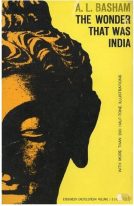 ancient India was generally heterosexual. Homosexualism of both sexes was not wholly unknown: it is condemned briefly in the law books, and the Kamasutra treats of it but cursorily, and with little enthusiasm. Literature ignores it. In this respect ancient India was far healthier than most other ancient cultures.” (The Wonder That Was India: 172.) The addition of Islam to the cultural life of the subcontinent also brought an awareness of its views on same-sex behaviors, and the coming of the British in the nineteenth century and the establishment of the government of the Raj introduced Christian values into the legal system as is reflected in the Indian Penal Code.
ancient India was generally heterosexual. Homosexualism of both sexes was not wholly unknown: it is condemned briefly in the law books, and the Kamasutra treats of it but cursorily, and with little enthusiasm. Literature ignores it. In this respect ancient India was far healthier than most other ancient cultures.” (The Wonder That Was India: 172.) The addition of Islam to the cultural life of the subcontinent also brought an awareness of its views on same-sex behaviors, and the coming of the British in the nineteenth century and the establishment of the government of the Raj introduced Christian values into the legal system as is reflected in the Indian Penal Code.
Coverage of gay activism in India is almost nonexistent in the early gay press of the United States. An exception is an article in the April 29, 1982 issue of The ADVOCATE which references an item originally published in London’s Gay News. The report states that the first ever conference of gay people to be held in India met in the city of Hyderabad in December 1981, attended by forty delegates from the country’s largest cities. Topics of discussion were the repeal of antigay laws, compiling a directory of gay organizations, organizing legal assistance for gay people who were being subjected to blackmail, and general social and domestic problems associated with being gay in Indian society. The concludes with a statement that “ Section 377 of the Indian Penal Code recommend either 10 years or life imprisonment for “ unnatural offenses.” This section of the Code dates back to 1860 and was introduced under the British colonial government. Five years after this conference, the organization Trikone was founded in San Francisco with the purpose of serving as a place where LGBT people who are of South Asian descent ( defined as Afghanistan, Bangladesh, Bhutan, India, Maldives, Myanmar (Burma), Nepal, Pakistan, Sri Lanka, and Tibet ) could find others like themselves in a supportive environment. Over the next thirty years, Trikone would go on establish chapters in the South Asian communities of many cities including Chicago, Atlanta, Toronto, and Sydney.
It was not until the 1990s that the current body of newsletters and monographs on the diverse faces of 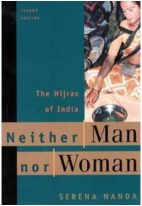 India’s LGBT community began to appear. The first was Serena Nanda’s Neither Man nor Woman: the Hijras of India, published in 1990. Known in the anthropological research on India, and originally used to refer to eunuchs, a hijra is an individual who considers themselves undefined by established gender categories, seeing themselves as transgender or transsexual and often wearing the clothing of the gender that fits their expression best. In traditional Indian society, hijras performed songs and dances at weddings and the ceremonies marking the birth of a male child. And in 1991, Bombay dost (The Bombay Friend), the first newspaper for Indian LGBT people, was founded, presenting a mixture of articles in English and Hindi. Its founder, Ashok Row Kavi, had long been involved with working for LGBT rights in India, having written a letter to the Times of India in 1981 about the Hyderabad conference. Bombay Dost would remain in print in various forms until 2002, return under new editorship in 2009, and celebrate its twentieth anniversary in 2015. 1991 also saw the publication in New Delhi of a groundbreaking report entitled Less Than Gay: A Citizens’ Report on the Status of Homosexuality in India, whose full text is now available online. It was issued by AIDS Bhedbhav Virodhi Andolan, India’s first AIDS activist organization, and is the first report to assess the social and legal situation of gay men and lesbians in India. It called for the repeal of Section 377 and claimed civil rights for LGBT people, addressing issues relating to same-sex marriage and parenting. Its opening paragraph conveys clearly the dialogue on homosexuality present in India at this time:
India’s LGBT community began to appear. The first was Serena Nanda’s Neither Man nor Woman: the Hijras of India, published in 1990. Known in the anthropological research on India, and originally used to refer to eunuchs, a hijra is an individual who considers themselves undefined by established gender categories, seeing themselves as transgender or transsexual and often wearing the clothing of the gender that fits their expression best. In traditional Indian society, hijras performed songs and dances at weddings and the ceremonies marking the birth of a male child. And in 1991, Bombay dost (The Bombay Friend), the first newspaper for Indian LGBT people, was founded, presenting a mixture of articles in English and Hindi. Its founder, Ashok Row Kavi, had long been involved with working for LGBT rights in India, having written a letter to the Times of India in 1981 about the Hyderabad conference. Bombay Dost would remain in print in various forms until 2002, return under new editorship in 2009, and celebrate its twentieth anniversary in 2015. 1991 also saw the publication in New Delhi of a groundbreaking report entitled Less Than Gay: A Citizens’ Report on the Status of Homosexuality in India, whose full text is now available online. It was issued by AIDS Bhedbhav Virodhi Andolan, India’s first AIDS activist organization, and is the first report to assess the social and legal situation of gay men and lesbians in India. It called for the repeal of Section 377 and claimed civil rights for LGBT people, addressing issues relating to same-sex marriage and parenting. Its opening paragraph conveys clearly the dialogue on homosexuality present in India at this time:
Many people deny that homosexuality exists in India, dismissing it as a phenomenon of the industrialised world. Others acknowledge its presence but condemn it as a capitalist aberration, a concern too individualistic to warrant attention in a poor country like ours. Still others label it a disease to be cured, an abnormality to be set right, a crime to be punished. The present report has been prepared with a view to showing how none of these views can stand the test of empirical reality or plain and simple common sense. (Less than Gay, p.3).
A more general work on the gay community of India (heavily based on 112 interviews) appeared in 1992 as Invisible Minority: The Unknown World of the Indian Homosexual.
 The most easily accessible work on LGBT life in India for American readers, A Lotus of Another Color: An Unfolding of the South Asian Gay and Lesbian Experience, was published in Boston by Alyson Press in 1993. This colorful collection of forty-six personal accounts by men and women from India, Pakistan, Sri Lanka and Bangladesh was the first book on the subject to reach the US readers’ market and hence had the effect of raising consciousness of the experiences of the South Asian LGBT population both within and outside the LGBT communities of the northern hemisphere. It was followed in 1996 by Giti Thadani’s groundbreaking survey Sakhiyani: Lesbian Desire in Ancient and Modern India. Three years later, she contributed an article on “The politics of identities and language: lesbian desire in ancient and modern India “to the anthology Female desires: same-sex relations and transgender practices across cultures. 1999 also saw the appearance of a work which in some ways served the same function as Sakhiyani, but from the male perspective, Jeremy Seabrook’s Love in a Different Climate: Men Who Have Sex with Men in India.
The most easily accessible work on LGBT life in India for American readers, A Lotus of Another Color: An Unfolding of the South Asian Gay and Lesbian Experience, was published in Boston by Alyson Press in 1993. This colorful collection of forty-six personal accounts by men and women from India, Pakistan, Sri Lanka and Bangladesh was the first book on the subject to reach the US readers’ market and hence had the effect of raising consciousness of the experiences of the South Asian LGBT population both within and outside the LGBT communities of the northern hemisphere. It was followed in 1996 by Giti Thadani’s groundbreaking survey Sakhiyani: Lesbian Desire in Ancient and Modern India. Three years later, she contributed an article on “The politics of identities and language: lesbian desire in ancient and modern India “to the anthology Female desires: same-sex relations and transgender practices across cultures. 1999 also saw the appearance of a work which in some ways served the same function as Sakhiyani, but from the male perspective, Jeremy Seabrook’s Love in a Different Climate: Men Who Have Sex with Men in India.
The new millennium in South Asian LGBT writing opened with a continuation of the anthology format in Same-sex Love in India: Readings from Literature and History, edited by Ruth Vanita and Saleem Kidwai. The Reader’s Guide to Lesbian and Gay Studies, edited by Timothy F. Murphy also published in 2000, contained an article on “India” by Jennifer Aswad Higgins. Ruth Vanita followed up on her earlier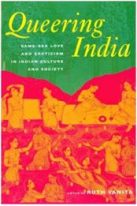 work with Queering India: Same-sex Love and Eroticism in Indian Culture and Society in 2001. The vast Indian diaspora was the site of the next work to appear, expanding the documentation of LGBT India beyond print into the visual record. Published in London in 2003, Red Threads: the South Asian Queer Connection in Photographs was created by Poulomi Desai and Parminder Sekhon and takes its title from the red braided bracelet traditionally worn by Hindus to signify their identity as members of that faith community. The complex landscape of India’s colonial heritage from the Raj provides the frame for Suparna Bhaskaran’s Made in India: Decolonizations, Queer Sexualities, Trans/national Projects issued by Palgrave in 2004, one of whose chapters examines ““Sexual Minorities” and Section 377 of the Indian Penal Code.”
work with Queering India: Same-sex Love and Eroticism in Indian Culture and Society in 2001. The vast Indian diaspora was the site of the next work to appear, expanding the documentation of LGBT India beyond print into the visual record. Published in London in 2003, Red Threads: the South Asian Queer Connection in Photographs was created by Poulomi Desai and Parminder Sekhon and takes its title from the red braided bracelet traditionally worn by Hindus to signify their identity as members of that faith community. The complex landscape of India’s colonial heritage from the Raj provides the frame for Suparna Bhaskaran’s Made in India: Decolonizations, Queer Sexualities, Trans/national Projects issued by Palgrave in 2004, one of whose chapters examines ““Sexual Minorities” and Section 377 of the Indian Penal Code.”
Moving from cultural description to political discussion, a valuable anthology of twenty-seven articles representing a diverse geographical base within India edited by activist lawyer Arvind Narrain was published in New Delhi in 2005 under the title Because I Have a Voice: Queer Politics in India. The widely debated question of same-sex marriage was explored by Ruth Vanita the same year in Love’s Rite: Same Sex Marriage in India and the West. Queer life in India and how it should be defined was further debated in Alternative Sexualities in India : The Construction of Queer Culture, by Ana Garcia-Arroyo published in Kolkata in 2006 ( and reissued in 2010 .) 2007 saw the discussion begun in Because I Have A Voice continued with Brinda Bose’s The Phobic and the Erotic : The Politics of Sexualities in Contemporary India, and the contribution of a piece by Ruth Vanita on ”Lesbian Studies and Activism in India “ to the Harrington Park Press two-volume set Twenty-first Century Lesbian Studies.
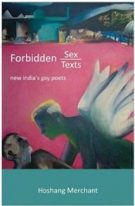 Urban LGBT history in the subcontinent as a separate area of investigation was inaugurated in 2008 with Parmesh Shahani’s Gay Bombay: Globalization, Love And (Be) longing In Contemporary India from Sage, and novelist Hoshang Merchant filled a gap in literary studies with Forbidden Sex, Forbidden Texts : New India’s Gay Poets in 2009. Given the massive amount of documentation created during the administration of the Raj, the question of how to trace the history of sexuality’s definition (and social attempts to control it) is an integral part of retrieving India’s LGBT Past, and in 2009 the first major study in this area appeared. In For The Record : On Sexuality And The Colonial Archive in India, Anjali R. Arondekar takes as his focus the period from 1843 to 1920, uncovering a wide range of sources including a failed sodomy prosecution from 1884 and illustrating the ways in which this aspect of India’s recent past can be sifted out from both official and public sources.
Urban LGBT history in the subcontinent as a separate area of investigation was inaugurated in 2008 with Parmesh Shahani’s Gay Bombay: Globalization, Love And (Be) longing In Contemporary India from Sage, and novelist Hoshang Merchant filled a gap in literary studies with Forbidden Sex, Forbidden Texts : New India’s Gay Poets in 2009. Given the massive amount of documentation created during the administration of the Raj, the question of how to trace the history of sexuality’s definition (and social attempts to control it) is an integral part of retrieving India’s LGBT Past, and in 2009 the first major study in this area appeared. In For The Record : On Sexuality And The Colonial Archive in India, Anjali R. Arondekar takes as his focus the period from 1843 to 1920, uncovering a wide range of sources including a failed sodomy prosecution from 1884 and illustrating the ways in which this aspect of India’s recent past can be sifted out from both official and public sources.
2009 was also the year in which a major legal case involving LGBT civil rights in India came before the 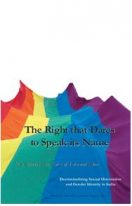 bench, a case perhaps unfamiliar to many readers outside the country and region. Its formal name was Naz Foundation v. Gov’t of NCT of Delhi, the Foundation being a nongovernmental organization which had been leading the movement to repeal Section 377 of the Indian Penal Code since 2001. Debate on the Section had also involved a diverse coalition of groups ranging from AIDS workers to women’s and human rights advocates. In July 2009, the case came up for a hearing before a two-judge bench at the Delhi High Court, who ruled that the provisions of Section 377 as written violated several rights and guarantees in three articles of the Constitution of India, and was thus unconstitutional when applied to the actions of consenting adults in private. This decision was subsequently overturned by the Supreme Court of India in 2012, which ruled that only Parliament had the authority to change a law. The Alternative Law Forum (founded in 2000 with a focus on social justice) in Bangalore published a follow-up report on the case written by Arvind Narrain and Marcus Eldridge summarizing all arguments made, the outline of the decision and commentaries on the significance of the event, which they titled The Right that Dares to Speak its Name: Naz Foundation vs. Union of India and Others: Decriminalising Sexual Orientation and Gender Identity in India. The full text of the report is available online at http://altlawforum.org/publications/the-right-that-dares-to-speak-its-name/.
bench, a case perhaps unfamiliar to many readers outside the country and region. Its formal name was Naz Foundation v. Gov’t of NCT of Delhi, the Foundation being a nongovernmental organization which had been leading the movement to repeal Section 377 of the Indian Penal Code since 2001. Debate on the Section had also involved a diverse coalition of groups ranging from AIDS workers to women’s and human rights advocates. In July 2009, the case came up for a hearing before a two-judge bench at the Delhi High Court, who ruled that the provisions of Section 377 as written violated several rights and guarantees in three articles of the Constitution of India, and was thus unconstitutional when applied to the actions of consenting adults in private. This decision was subsequently overturned by the Supreme Court of India in 2012, which ruled that only Parliament had the authority to change a law. The Alternative Law Forum (founded in 2000 with a focus on social justice) in Bangalore published a follow-up report on the case written by Arvind Narrain and Marcus Eldridge summarizing all arguments made, the outline of the decision and commentaries on the significance of the event, which they titled The Right that Dares to Speak its Name: Naz Foundation vs. Union of India and Others: Decriminalising Sexual Orientation and Gender Identity in India. The full text of the report is available online at http://altlawforum.org/publications/the-right-that-dares-to-speak-its-name/.
The current decade has seen all of the established areas of writing on LGBT India continue to expand and diversify. Hoshang Merchant’s short 2010 book Indian Homosexuality: Ancient India to Contemporary India provides a useful overview similar to Vanita’s Queering India, and the Greenwood Encyclopedia of LGBT Issues Worldwide contained an article on India. In 2011, the American corporation Films for the Humanities produced the documentary Out in Mumbai : A Victory for India’s LGBT Community, which assesses the tasks needed to craft a queer identity in modern India one year after the Delhi Court decision on Section 377. This sense of assessment also appears in the article “Indian and Lesbian and What Came Next: Affect, Commensuration, and Queer Emergences” by Naisargi Dave in American Ethnologist. Dave would further expand on his research in 2012 with Queer Activism in India: A Story in the Anthropology of Ethics from Duke University Press. 2012 also witnessed the publication of another anthology edited by Hoshang Merchant, Yaraana: Gay Writing From South Asia, similar in form to Forbidden Sex, Forbidden Texts but with the focus on plays, stories, and prose in addition to poetry, an expanded reissue of a collection originally published in 1999 in New Delhi by Penguin Books but which did not then have an edition marketed outside India. The visual record begun with Out in Mumbai was augmented in the period 2010-2012 with the work of Project Bolo (“Project Speak Out”) whose goal was to offer positive role models to Indian LGBT people through the medium of individual documentaries recording the lives of people who had made a difference to LGBT people (and incidentally preserving the history of the LGBT rights movement in India. Produced with the assistance of the United Nations Development Program, the set eventually numbered seventeen DVDs. Attempts to access the Project’s website in 2016 were met with the message that the site had been hacked. Another online source covering the controversy over Section 377, based on research in April 2012, is Diana Boesch’s Creating Dignity Out of Despair: The Impact of the 2009 Decriminalization of Homosexuality in Delhi.
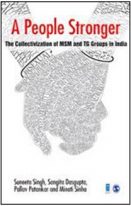 2013 is notable for the publication of A People Stronger: The Collectivization of MSM and TG Groups in India, collectivization in this context referring to the coming together of men who have sex with men (MSM) and people who identify as transgender (TS) to form visible groups working for change within the framework of India’s Constitution. One of the more unusual approaches to the LGBT question in India also appeared in 2014 in the form of a report commissioned by the World Bank (available online). The Economic Cost of Stigma and the Exclusion of LGBT People: A Case Study of India discusses three major topics- the documentation of antigay attitudes in India (based on a public opinion survey done in 2006), the economic impact on excluding LGBT people in areas ranging from education and limitation of available labor to health care issues and loss of productivity, and an admission that, while current data were insufficient to estimate the exact cost of such exclusion for the Indian economy, the actual costs could be considerable. Health concerns were a central issue in another 2014 offering, Arnab Das’ Sexuality, Identity and Health: Same-Sex Behaviour of Urban Indian Men. The Journal of Lesbian Studies also published “Relighting the Fire: Visualizing the Lesbian in Contemporary India” by Churnjeet Mahn and Diane Watt, a thoughtful study of the controversy occasioned by the creation of the 1996 film Deepa Mehtas Fire, the first mass-marketed film to be released in India portraying same-sex love between women and its continuing impact for India’s LGBT community in terms of social acceptance and antigay discrimination. And the pervasive nature of media for India’s LGBT young people was also examined in 2014 by Rohit Dasgupta in the article “Parties, Advocacy and Activism: Interrogating Community and Class in Digital Queer India” published in the anthology Queer Youth and Media Cultures, edited by Christopher Pullen of Bournemouth University. A valuable overview of the state of gay literary history of India was added in July 2015 with Urmi Chanda-Vaz’z emphatically titled article post “Gay Literature Is Firmly Out Of The Closet In India” available online from Quartz.
2013 is notable for the publication of A People Stronger: The Collectivization of MSM and TG Groups in India, collectivization in this context referring to the coming together of men who have sex with men (MSM) and people who identify as transgender (TS) to form visible groups working for change within the framework of India’s Constitution. One of the more unusual approaches to the LGBT question in India also appeared in 2014 in the form of a report commissioned by the World Bank (available online). The Economic Cost of Stigma and the Exclusion of LGBT People: A Case Study of India discusses three major topics- the documentation of antigay attitudes in India (based on a public opinion survey done in 2006), the economic impact on excluding LGBT people in areas ranging from education and limitation of available labor to health care issues and loss of productivity, and an admission that, while current data were insufficient to estimate the exact cost of such exclusion for the Indian economy, the actual costs could be considerable. Health concerns were a central issue in another 2014 offering, Arnab Das’ Sexuality, Identity and Health: Same-Sex Behaviour of Urban Indian Men. The Journal of Lesbian Studies also published “Relighting the Fire: Visualizing the Lesbian in Contemporary India” by Churnjeet Mahn and Diane Watt, a thoughtful study of the controversy occasioned by the creation of the 1996 film Deepa Mehtas Fire, the first mass-marketed film to be released in India portraying same-sex love between women and its continuing impact for India’s LGBT community in terms of social acceptance and antigay discrimination. And the pervasive nature of media for India’s LGBT young people was also examined in 2014 by Rohit Dasgupta in the article “Parties, Advocacy and Activism: Interrogating Community and Class in Digital Queer India” published in the anthology Queer Youth and Media Cultures, edited by Christopher Pullen of Bournemouth University. A valuable overview of the state of gay literary history of India was added in July 2015 with Urmi Chanda-Vaz’z emphatically titled article post “Gay Literature Is Firmly Out Of The Closet In India” available online from Quartz.
The current and ongoing struggle of LGBT people for visibility and acceptance within the var ied worlds of modern India (whether on the subcontinent or in the many Indian diaspora communities across the globe) continues to be mirrored in works published this year, notably Jyoti Puri’s Sexual States: Governance and The Struggle Over the Antisodomy Law in India from Duke University Press. Given the multicultural nature of our patron populations, and the continuing dialogue on LGBT issues set before the Indian peoples , this complex literature promises to be one which will contribute significantly to library collections for years to come.
ied worlds of modern India (whether on the subcontinent or in the many Indian diaspora communities across the globe) continues to be mirrored in works published this year, notably Jyoti Puri’s Sexual States: Governance and The Struggle Over the Antisodomy Law in India from Duke University Press. Given the multicultural nature of our patron populations, and the continuing dialogue on LGBT issues set before the Indian peoples , this complex literature promises to be one which will contribute significantly to library collections for years to come.
Namaste…
References
Aids Bhedbhav Virodhi Andolan. Less than Gay: A Citizens’ Report on the Status of Homosexuality in India. New Delhi, India: AIDS Bhedbhav Virodhi Andolan, 1991
https://docs.google.com/file/d/0BwDlipuQ0I6ZMXVmNWk0ajdqWEU/edit?pref=2&pli=1
Arondekar. Anjali R. For The Record: On Sexuality and the Colonial Archive in India. Durham: Duke University Press, 2009.
Badgett, M. V. Lee. The Economic Cost of Stigma and the Exclusion of LGBT People: A Case Study of India. The World Bank, 2014. http://documents.worldbank.org/curated/en/2014/10/23952131/economic-cost-stigma-exclusion-lgbt-people-case-study-india
Basham, Arthur Llewellyn. The Wonder That Was India: A Survey of the Culture of the Indian Subcontinent Before the Coming of the Muslims. New York: Grove, 1959.
Bhaskaran, Suparna. Made in India: Decolonizations, Queer Sexualities, Trans/national Projects. New York: Palgrave Macmillan, 2004.
Blackwood, Evelyn and Saskia Wieringa. Female Desires: Same-Sex Relations and Transgender Practices Across Cultures. New York: Columbia University Press, 1999.
Boesch, Diana. Creating Dignity Out of Despair: The Impact of the 2009 Decriminalization of Homosexuality in
Delhi. SIT Digital Collections, 2012.
http://digitalcollections.sit.edu/cgi/viewcontent.cgi?article=2288&context=isp_collection
Bombay Dost. Bombay: Ashok Row. Kavi 1991-2002. In English and Hindi. http://www.bombaydost.co.in/
Bose, Brinda and Sunbhbrata Bhattacharya. The Phobic and the Erotic: The Politics of Sexualities in Contemporary India. New York and Calcutta: Seagull Books, 2007.
Bouchard, Jen Westmoreland. “India” in The Greenwood Encyclopedia of LGBT Issues Worldwide, edited by Chuck Stewart. Santa Barbara, California: Greenwood Press, 2010: 391-401.
Chanda-Vaz, Urmi. “Gay Literature Is Firmly out Of the Closet in India.” http://qz.com/458160/gay-literature-is-firmly-out-of-the-closet-in-india/ Accessed May 17 2016.
Das, Arnab. Sexuality, Identity and Health: Same-Sex Behaviour of Urban Indian Men. New Delhi: Ashwin-Anoka Press, 2014.
Dasgupta, Rohit K. “Parties, Advocacy and Activism: Interrogating Community and Class in Digital Queer India” in Queer Youth and Media Cultures, edited by Christopher Pullen, New York: Palgrave Macmillan, 2014: 265-277.
Dave, Naisargi N. “Indian and Lesbian and What Came Next: Affect, Commensuration, and Queer Emergences.” American Ethnologist. v. 38, no. 4 (2011): 650-665.
Dave, Naisargi N. Queer Activism in India: A Story in the Anthropology of Ethics. Durham: Duke University Press, 2012.
Desai, Poulomi and Parminder Sekhon. Red Threads: The South Asian Queer Connection in Photographs. London: Millivres Prowler, 2003.
“First Ever Gay Conference is Held in India.” The ADVOCATE n. 341 (April 29, 1982) p.10.
Forbidden Sex, Forbidden Texts: New India’s Gay Poets, edited by Hoshang Merchant. London; New York: Routledge, 2009.
García-Arroyo, Ana. Alternative Sexualities in India: The Construction of Queer Culture. Kolkata: Books Way, 2006, 2010.
The Greenwood Encyclopedia of LGBT Issues Worldwide, edited by Chuck Stewart. Santa Barbara, California: Greenwood Press, 2010.
Higgins, Jennifer Aswad. “India” in Reader’s Guide to Lesbian and Gay Studies, edited by Timothy F. Murphy. Chicago: Fitzroy Dearborn Publishers, 2000: 301-304.
Kala, Arvind. Invisible Minority: The Unknown World of the Indian Homosexual. New Delhi: Dynamic Books, 1992.
A Lotus of Another Color: An Unfolding of the South Asian Gay and Lesbian Experience, edited by Rakesh Ratti. Boston: Alyson Publications, 1993.
Mahn, Churnjeet and Diane Watt. “Relighting the Fire: Visualizing the Lesbian in Contemporary India.” Journal of Lesbian Studies, 18 (3). 2014: 223-236.
Merchant, Hoshang. Indian Homosexuality: Ancient India to Contemporary India. New Delhi: Allied Publishers, 2010.
Nanda, Serena. Neither Man nor Woman: The Hijras of India. Belmont, California: Wadsworth Publishing Company, c1990.
Narrain, Arvind and Gautam Bhan. Because I Have A Voice: Queer Politics in India. New Delhi: Yoda Press: Distributed by Foundation Books, 2005.
Narrain, Arvind and Marcus Eldridge. The Right That Dares To Speak Its Name: Naz Foundation vs. Union of India and Others: Decriminalising Sexual Orientation and Gender Identity in India. Bangalore: Alternative Law Forum, 2009.
Out in Mumbai: A Victory for India’s LGBT Community. New York: Films for the Humanities & Sciences, 2011.
Puri, Jyoti. Sexual States: Governance and the Struggle over the Antisodomy Law in India. Durham: Duke University Press, 2016.
Queer Youth and Media Cultures, edited by Christopher Pullen, New York: Palgrave Macmillan, 2014.
Same-sex Love in India: Readings from Literature and History, edited by Ruth Vanita and Saleem Kidwai. Houndmills, Basingstoke: 2000.
Seabrook, Jeremy. Love in A Different Climate: Men Who Have Sex with Men in India. New York: Verso, 1999.
Shahani, Parmesh. Gay Bombay: Globalization, Love And (Be)longing In Contemporary India. New Delhi, India; Thousand Oaks, Calif.: SAGE, 2008.
Singh, Suneeta. A People Stronger: The Collectivization of MSM and TG Groups in India. Los Angeles: SAGE, 2013.
Thadani, Giti. Sakhiyani: Lesbian Desire in Ancient and Modern India. London and New York: Cassell, 1996.
Thadani, Giti. “The politics of identities and languages: lesbian desire in ancient and modern India” in Female Desires: Same-sex Relations and Transgender Practices Across Cultures, by Evelyn Blackwood and Evelyn and Saskia Wieringa. New York: Columbia University Press, 1999. : 67-90.
Trikone http://www.trikone.org/
Vanita, Ruth. Queering India: Same-sex Love and Eroticism in Indian Culture and Society. London: Routledge, 2001.
Vanita, Ruth. Love’s Rite: Same Sex Marriage in India and the West. New York: Palgrave Macmillan, 2005.
Vanita, Ruth. “Lesbian Studies and Activism in India.” Journal of Lesbian Studies. v. 11, no. -3/4 2007 : 243-253.
Yaraana: Gay Writing from South Asia, edited by Hoshang Merchant. London: Penguin, 2012.
Copyright 2016 R. Ridinger


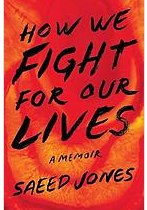
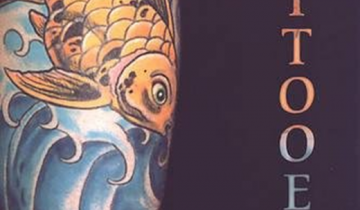
… [Trackback]
[…] Read More Infos here: glbtrt.ala.org/reviews/off-the-shelf-15-land-of-many-faces-telling-the-tales-of-lgbt-india/ […]